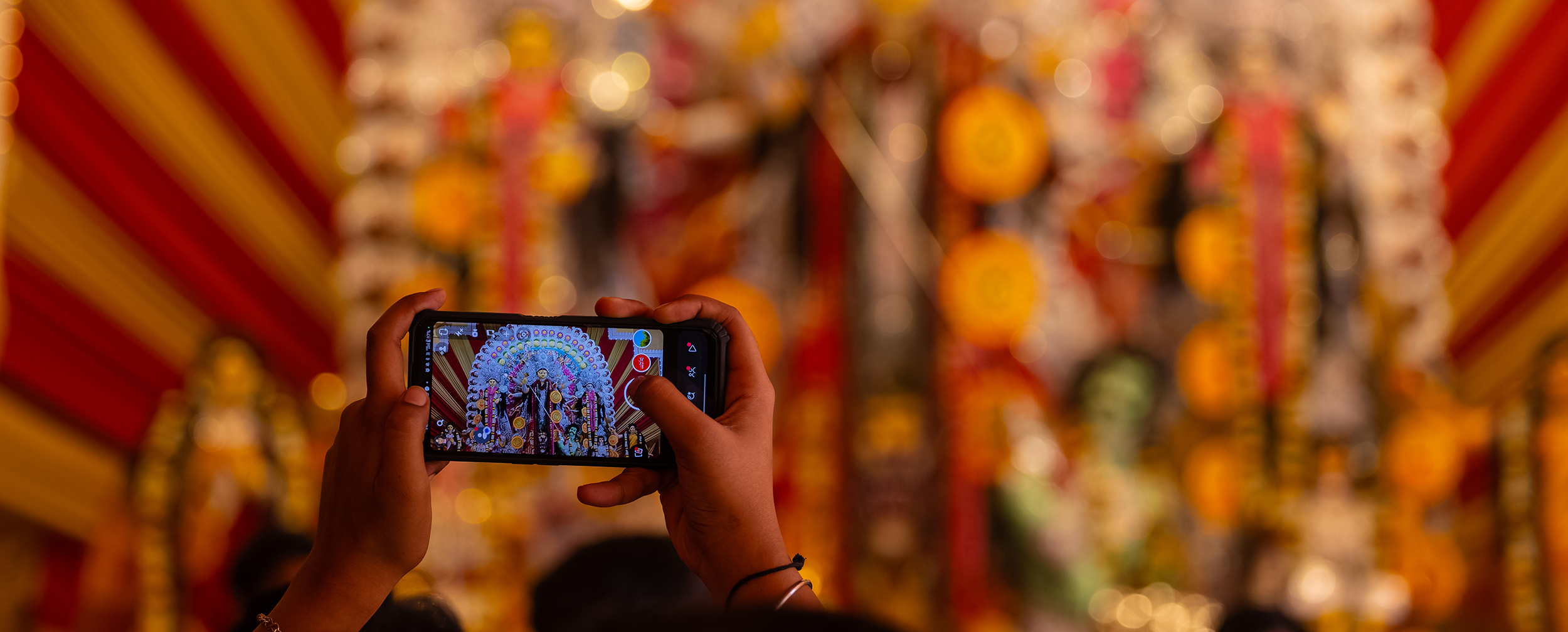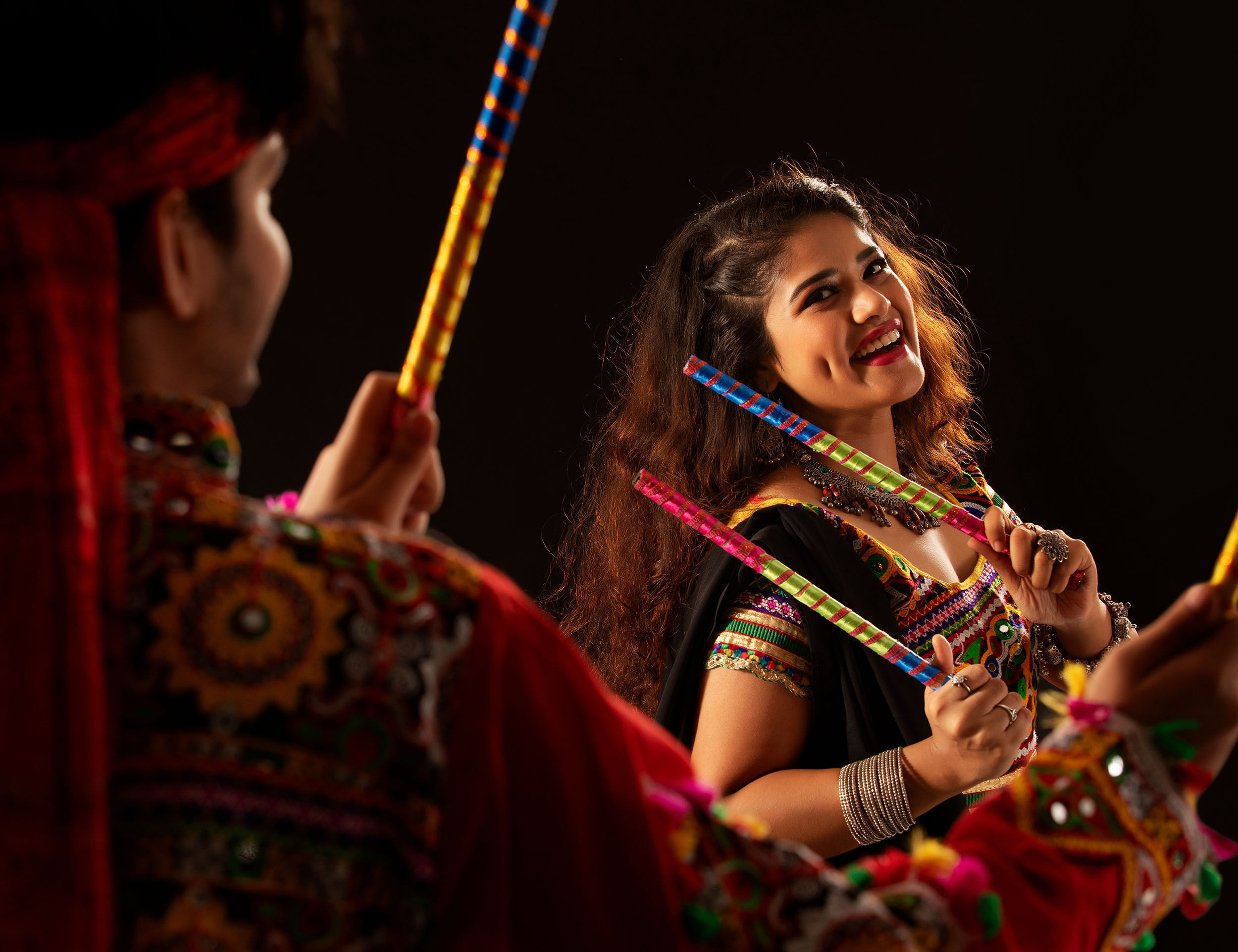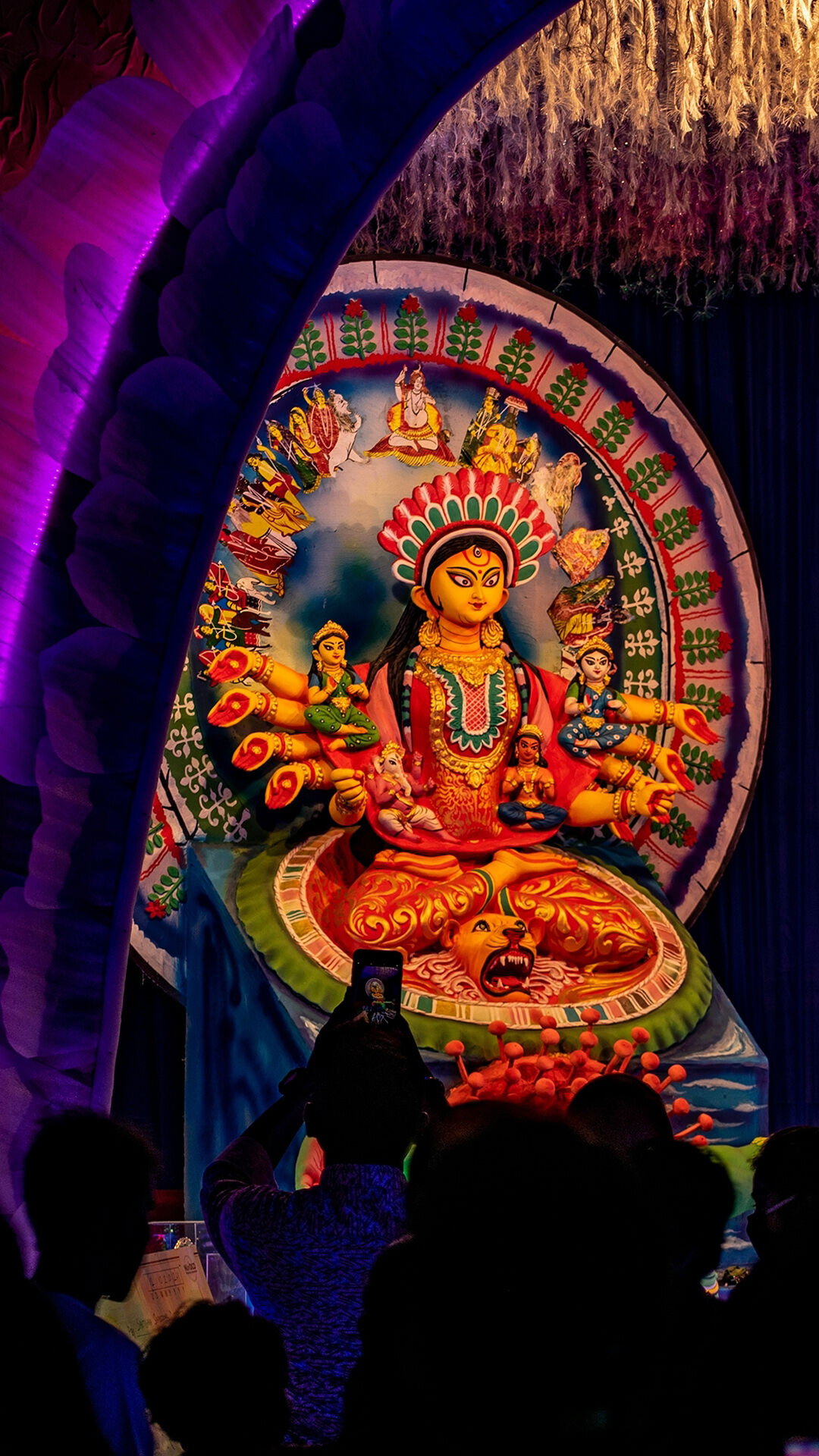STORIES BY MANYAVAR & MOHEY

Lifestyle
Navratri Colour Guide: What Each Shade Means & How to Style It
Date 4 September 2025 Reading time: 7-10 mins
Navratri celebrates feminine power through nine magical nights of devotion, dance, and dressing up! The festival brings a rainbow of colours, each representing a specific form of Goddess Durga and carrying profound spiritual meaning. While many of us eagerly follow the nine colours of Navratri tradition each year, few understand the deeper connection between these hues and the goddesses they honour.
This guide dives into the fascinating world of the nine colours of Navratri in order, explaining their spiritual significance, connection to the goddesses, and how you can style each colour beautifully for the festivities. Whether you're participating in garba nights or hosting a Navratri puja at home, understanding these colour codes adds an extra layer of meaning to your celebrations!
Understanding Navratri and Its Significance
Navratri literally means 'nine nights' in Sanskrit, with each night dedicated to worshipping a different form of Goddess Durga. The nine days, nine colours of Navratri tradition have evolved over centuries, with each colour channelling the unique energy and attributes of the goddess worshipped on that day.
The nine colours of Navratri in order follow the traditional sequence that has been observed for generations. Let's explore each day's colour, the goddess it honours, and how you can style it beautifully!
Day 1: Yellow for Goddess Shailaputri
The nine colours of Navratri, in order, begin with sunshine yellow, honouring Goddess Shailaputri, the daughter of the mountains. Yellow signifies happiness, learning, and optimism, setting a bright tone for the festival's beginning.
Shailaputri represents the power of nature and earth, bringing stability and grounding energy. This goddess rides a bull and holds a trishul, symbolising strength with serenity, exactly what yellow represents in the significance of Navratri colours tradition.
Style this auspicious shade with a beautiful yellow saree for a ceremonial look, or go contemporary with a mustard yellow saree that brings a deeper, more sophisticated tone to your Day 1 celebrations.
Day 2: Green for Goddess Brahmacharini
Green, the colour of growth and prosperity, marks Day 2 of the nine days nine colours of Navratri. This refreshing hue honours Goddess Brahmacharini, who represents penance, renunciation, and spiritual pursuit. Her name means "one who practices penance," and she blesses devotees with peace and happiness.
The significance of Navratri colours becomes particularly evident with green, which symbolises new beginnings and fertility. Just as plants grow and flourish, wearing green invites abundance and renewal into your life.
Create a stunning Day 2 look with a bottle green saree that exudes sophistication, or choose a dark green saree for a deeper, more mysterious vibe. For a lighter touch, a light green saree or sea green saree offers fresh, spring-like energy.
Day 3: Grey for Goddess Chandraghanta
The third in colour in the sequence is grey – a shade that might seem unexpected for a festive occasion but carries profound meaning. Grey represents balance, neutrality, and transformation, perfectly aligning with Goddess Chandraghanta's energy.
Chandraghanta, whose forehead bears a half-moon (chandra) shaped like a bell (ghanta), is a fierce warrior who battles evil while maintaining inner peace. In the significance of Navratri colours, grey symbolises her balanced nature – powerful yet composed, fierce yet fair.
For a modern take on this neutral shade, explore a grey Indo-Western outfit from Mohey that blends contemporary silhouettes with conventional elements.
Day 4: Orange for Goddess Kushmanda
Brimming with energy and warmth, orange takes centre stage on the fourth day of Navratri. This vibrant hue honours Goddess Kushmanda, whose name means "the cosmic egg" – she who created the universe with her divine smile.
Orange represents creativity, enthusiasm, and positive energy in the significance of Navratri colours tradition. It's the colour of sunrise, symbolising new beginnings and the life-giving warmth of the sun.
Make a striking statement with an orange lehenga for garba nights, or choose an orange saree for a more classic approach. Both options channel the fiery, creative energy of Goddess Kushmanda.
Day 5: White for Goddess Skandamata
White, the colour of purity and peace, marks the midpoint of the nine colours of Navratri journey. This serene shade honours Goddess Skandamata, the mother of Skanda (Lord Kartikeya), who represents motherly love and nurturing energy.
In the significance of Navratri colours, white symbolises clarity, innocence, and spiritual awakening. It's the perfect canvas for introspection as the festival reaches its halfway point.
For a stunning white ensemble, consider a white lehenga that combines simplicity with sophistication. Or choose an off-white saree with delicate embroidery for an elegant and ethereal look.
Day 6: Red for Goddess Katyayani
The sixth day of nine days nine colours of Navratri brings us red – the colour of passion, power, and love. This bold hue celebrates Goddess Katyayani, the warrior form of Durga, who defeated the demon Mahishasura.
Red holds special significance in Indian culture, symbolising both marital bliss and fierce courage. The significance of Navratri colours represents the warrior spirit and protective energy of the divine mother.
Make a powerful statement with a royal red lehenga that channels Katyayani's regal energy, or opt for a red saree for timeless elegance. Both choices honour the goddess's fierce and passionate nature.
Day 7: Royal Blue for Goddess Kalaratri
Royal blue, representing strength and protection, marks the seventh day of Navratri. This majestic shade honours Goddess Kalaratri, the fiercest form of Durga, who destroys ignorance and evil.
Despite her fearsome appearance, Kalaratri brings blessings and protection to her devotees. In the significance of Navratri colours, royal blue symbolises courage, determination, and the infinite cosmic night from which all creation emerges.
Create a stunning Day 7 look with a blue lehenga that captures the depth and mystery of the night sky. For something more cultural, a royal blue saree or navy blue saree offers timeless elegance.
Day 8: Pink for Goddess Mahagauri
The eighth day of nine days nine colours of Navratri brings the gentle yet powerful energy of pink, honouring Goddess Mahagauri – the fair and beautiful form of Durga who symbolises purity and compassion.
Pink represents tenderness, love, and nurturing care in the significance of Navratri colours. It's a reminder of the goddess's gentle aspect that balances her fierce warrior energy.
Style this feminine shade with a light pink lehenga for a soft, romantic look, or choose a light pink saree for classic grace. For a more vibrant option, a dark pink saree makes a bolder statement.
Day 9: Purple for Goddess Siddhidatri
The nine colours of Navratri journey conclude with purple, a shade representing spiritual awakening and divine wisdom. This regal colour honours Goddess Siddhidatri, who possesses and bestows all types of siddhis (supernatural powers) and fulfils the divine aspirations of her devotees.
In the significance of Navratri colours, purple symbolises transformation, mystery, and the higher realms of consciousness. It's the perfect colour to conclude the festival as devotees seek the goddess's blessings for spiritual growth.
Make a memorable final impression with a purple lehenga that celebrates Siddhidatri's mystical energy, or choose a purple saree or dark purple saree for elegant sophistication.
The Connection Between the Colours and the Goddesses
The deep connection between the nine colours of Navratri and the goddesses they represent isn't just symbolic – it's a profound system that maps cosmic energies to visual elements. Each colour resonates with the specific attributes and powers of the goddess worshipped on that day.
By following the nine days nine colours of Navratri tradition, devotees align themselves with this spiritual progression, inviting the specific blessings of each goddess into their lives.
Nine Colours of Navratri 2024: A Look Back
The nine colours of Navratri in 2024 followed the traditional sequence, but with some interesting styling trends that emerged. Last year saw a fusion approach gaining popularity, with many devotees mixing contemporary silhouettes with traditional colour symbolism.
Some notable trends from 2024 included:
- Indo-Western Fusion - Indo-western outfits like coordinated sets and fusion gowns replaced conventional lehengas for younger participants
- Sustainable Fashion - Many chose handloom fabrics and naturally dyed clothing to honour the significance of Navratri colours in an eco-friendly way
- Minimalist Accessories - Simple, statement pieces replaced heavy jewellery sets
- Comfort-First Approach - Breathable fabrics and practical silhouettes gained preference for long nights of garba and dandiya
Nine Colours of Navratri 2026: A Look Ahead
For 2026, the nine colours of Navratri tradition continue with some fresh approaches to styling each shade. Fashion forecasts suggest these trends will dominate the festival season:
- Monochrome Magic - Wearing different shades of the same colour family for a sophisticated, layered look
- Contrast Blouses - Pairing lehengas with unexpected blouse colours that complement the day's designated hue
- Regional Handlooms - Celebrating India's textile diversity with state-specific weaves in the Navratri colour of the day
- Statement Drapes - Innovative saree draping styles that add drama and movement for garba nights
- Mixed Prints - Combining different patterns in the same colour family for visual interest
Celebrating Navratri
The nine colours of Navratri aren't just a fashion statement – they're a visual prayer, connecting devotees to the divine feminine energy in her various manifestations. By understanding the significance of Navratri colours and their connection to the goddesses, you transform your festival wardrobe into a meaningful spiritual practice.
Whether you prefer sarees and lehengas or contemporary Indo-Western outfits, Mohey offers beautiful options in all nine sacred shades. Explore our collection to find pieces that honour both culture and your personal style, making this Navratri a celebration of divine femininity in all its colourful glory!







